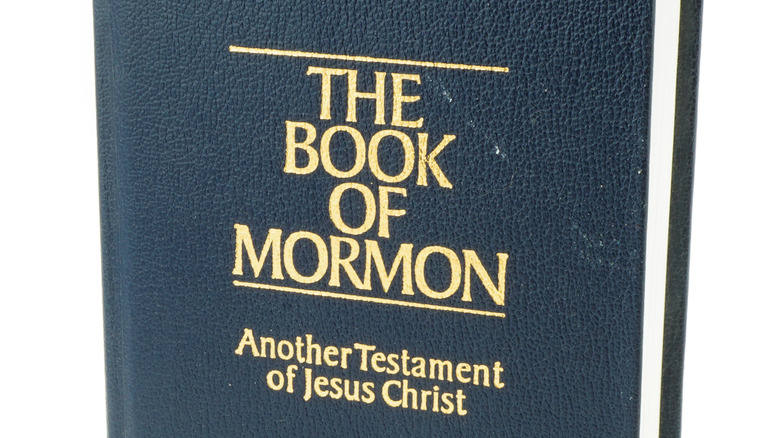The Stunning Number Of Mark Hofmann Forgeries The LDS Had In Its Collections
The story of Mark Hofmann, arts dealer turned counterfeiter and murderer, captivated viewers in the three-part Netflix docuseries "Murder Among the Mormons," examining the 1985 Salt Lake City pipe bombing and its aftermath.
Hofmann lived in the area with "a booming business 'discovering' (ie. forging) and selling rare historical documents, often related to the founding and early development of the Mormon church," according to Women's Health. That ended after pipe bombs planted by Hofmann in October 1985 murdered two locals, Steve Christensen and Kathy Sheets. Hofmann received life imprisonment and currently resides at the Utah State Prison. Before the killings, though, Hofmann created many forgeries, from historical documents to signatures to an Emily Dickinson poem, according to a 2002 report by Deseret News, which quoted Latter-day Saints Church historian Richard Turley, who said that the "church had discovered 446 Hofmann forgeries in its collections."
Hofmann's forgeries inspired a two-day symposium in 2002, "Genuine Fakes: The Forgeries of Mark Hofmann," held in Salt Lake City and then followed by an exhibit of some of his fakes at Ken Sanders Rare Books for a month.
Hofmann tricked many individuals and organizations, including the Church of Jesus Christ of Latter-day Saints, bilking them of millions of dollars. Some of the forgeries questioned beliefs within the LDS Church, said The Los Angeles Times.
Forgery crimes that led to murder
The White Salamander Letter, for instance, showed church founder Joseph Smith discovered the gold plates containing The Book of Mormon from a magical salamander's intervention, rather than the angel Moroni. "This and other documents that cast doubt on the LDS history were donated to the Mormon Church or purchased by leaders and stored in the archival vault of the Mormon Church in Salt Lake City," according to Women's Health.
Christensen, a Latter-day Saints bishop who also collected historical documents, and Sheets, the wife of his business partner, were killed on October 15, 1985, by a pipe bomb. Investigators believed that Hofmann hatched his plan after "he had sold dozens of potentially embarrassing and supposedly historical documents to the Mormon Church and then ... used homemade bombs to murder" them to prevent disclosure of the act, according to The New York Times.
Hofmann, also a victim of an incendiary device, received treatment at a hospital the next day. Initially, blame wasn't placed on him until police found pipe sections in his car. On January 23, 1987, Hofmann pleaded guilty to second-degree murder and theft by deception.
The Salt Lake Tribune reported that Hofmann felt trapped by Christensen's threat to expose him. Hofmann wrote, "The most important thing in my mind was to keep from being exposed as a fraud in front of my friends and family ... I felt I would rather take human life or even my own life rather than to be exposed."

